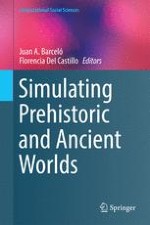2016 | OriginalPaper | Buchkapitel
14. Personalities, Physiology, Institutions and Genetics: Simulating Ancient Societies with Intelligent Virtual Agents
verfasst von : Tomas Trescak, Anton Bogdanovych, Simeon Simoff
Erschienen in: Simulating Prehistoric and Ancient Worlds
Aktivieren Sie unsere intelligente Suche, um passende Fachinhalte oder Patente zu finden.
Wählen Sie Textabschnitte aus um mit Künstlicher Intelligenz passenden Patente zu finden. powered by
Markieren Sie Textabschnitte, um KI-gestützt weitere passende Inhalte zu finden. powered by
